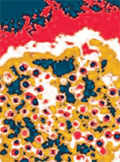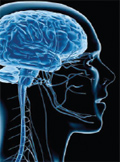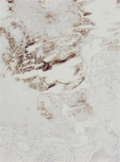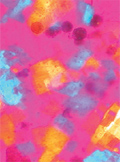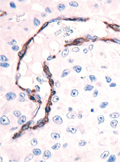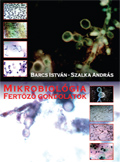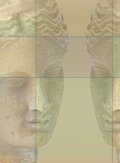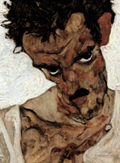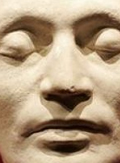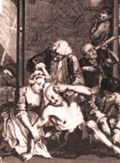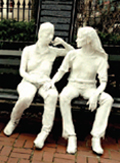The eLitMed.hu medical portal uses computer cookies for convenient operation. Detailed information can be found in the Cookie-policy.
Lege Artis Medicinae - 2013;23(05-06)
Content
[Optimizing the efficacy of triple combination therapy of chronic hepatitis C]
[The outcome of chronic hepatitis C (CHC) therapy has been improved significantly. If sustained virologic response (SVR) is achieved, then it may prevent the occurrence of liver failure and hepatocellular carcinoma. With the currently used double combination therapy (peginterferon and ribavirin) SVR can be achieved in 40-50% of patients with genotype 1. In treatment naive patients, triple combination with protease inhibitors can result in 70-75% SVR. In treatment experienced patients, however, the result of the previous therapy, which mostly depends on the reaction to interferon (IFN), has a significant influence on the outcome of triple combination. INF sensitivity is the highest in relapsers, triple combination can achieve about 85% SVR, while in null responders this is only 30%. Viral resistance is a new phenomenon during triple combination therapy of CHC. In poorly IFN responsive patients the virus is effectively exposed to protease inhibitor functional monotherapy, leading to the rapid emergence of resistant virus. IFN sensitivity is well represented by the on-treatment viral response, therefore the knowledge of the previous viral response, relapse, a partial response or a null response is absolutely important. Optimization of triple therapy is crucial, since for a lot of patients with advanced liver disease it might be the last chance to achieve an SVR. The selection of the patients seems very important. Relapsers are the best candidates, there is no doubt with the indication. However, there are many debates for cirrhotic nullresponders, since the most virological failures are expected in this group. Prevention of viral resistance is crucial. PegIFN and ribavirin suppress both wild-type and resistant virus. PegIFN α-2a based treatment proved to be the most effective backbone for triple combination. This combination should be preferred especially for treatment experienced patients. Adherence to therapy is also critically important to prevent resistance. If resistant mutants appear, treatment should be stopped promptly.]
[Opportunities in drug therapy of biliary tract cancer. Past - present- future]
[Biliary tract cancer is relatively rare tumour, but the dismal prognosis renders it frightful. Biliary tract cancers which consist of gall bladder cancers and bile duct cancers can be cured only with surgery thus it is exceedingly important that the surgery should take place in dedicated centres. The multidisciplinary approach may involve drug therapy, too, as an adjunct to surgery or for palliation. This publication summarizes present data about systemic treatment with some chronological point of view. Starting from therapeutic nihilism of the past and projecting anticipatory development of the future it shows the present state of medical treatment in this patient population.]
[Development of the diagnostic criteria of Alzheimer’s disease]
[Alzheimer’s disease is a new endemic of the 21st century, which is going to become the biggest health and social problem of the ageing societies in the next few decades. Significant discoveries have been made by structural and functional imaging and biochemical (especially CSF) and genetic tests regarding the diagnosis of Alzheimer’s disease. The modern diagnostic results were recently incorporated into the diagnostic criteria. This review summarises these diagnostic results.]
[A simple method to demonstrate urate crystals in formalin fixed tissue]
[In our previous study we refuted the thesis that sodium urate crystals are not, or only rarely detectable in formalin-fixed histological samples because they dissolve in the aqueous formalin solution. Our observations indicate that dissolution of urate crystals is primarily caused by haematoxylineosin staining. Undeniably, however, urate crystals are partially dissolved in the aqueous solution of formaldehyde, and thus a small amount of urate deposits may totally dissolve from tissue samples. The aim of the present study was to identify those steps of the staining procedure that are responsible for the dissolution of urate crystals. We found that the dissolution of urate crystals during the course of staining was caused by the combined effects of haematoxylin staining, treatment with 1% aqueous lithium carbonate solution and dehydration with acetone. As the simplest histological method for the detection of urate crystals, we recommend examining unstained sections (mounted with Canada balsam) of formalin-fixed, paraffin-embedded tissue samples in polarised light. According to our previous study, about two thirds of urate crystals remain detectable on unstaied sections, whereas haematoxylin-eosin stained sections of the same tissue samples (derived from patients with gout) did not contain urate crystals. In the samples where urate crystals could be detected in haematoxylin- eosin stained sections using polarised light, the unstained sections contained much more crystals, which shows that dissolution is greatly decreased on unstained sections.]
1.
Clinical Neuroscience
[Headache registry in Szeged: Experiences regarding to migraine patients]2.
Clinical Neuroscience
[The new target population of stroke awareness campaign: Kindergarten students ]3.
Clinical Neuroscience
Is there any difference in mortality rates of atrial fibrillation detected before or after ischemic stroke?4.
Clinical Neuroscience
Factors influencing the level of stigma in Parkinson’s disease in western Turkey5.
Clinical Neuroscience
[The effects of demographic and clinical factors on the severity of poststroke aphasia]1.
2.
Clinical Oncology
[Pancreatic cancer: ESMO Clinical Practice Guideline for diagnosis, treatment and follow-up]3.
Clinical Oncology
[Pharmacovigilance landscape – Lessons from the past and opportunities for future]4.
5.




